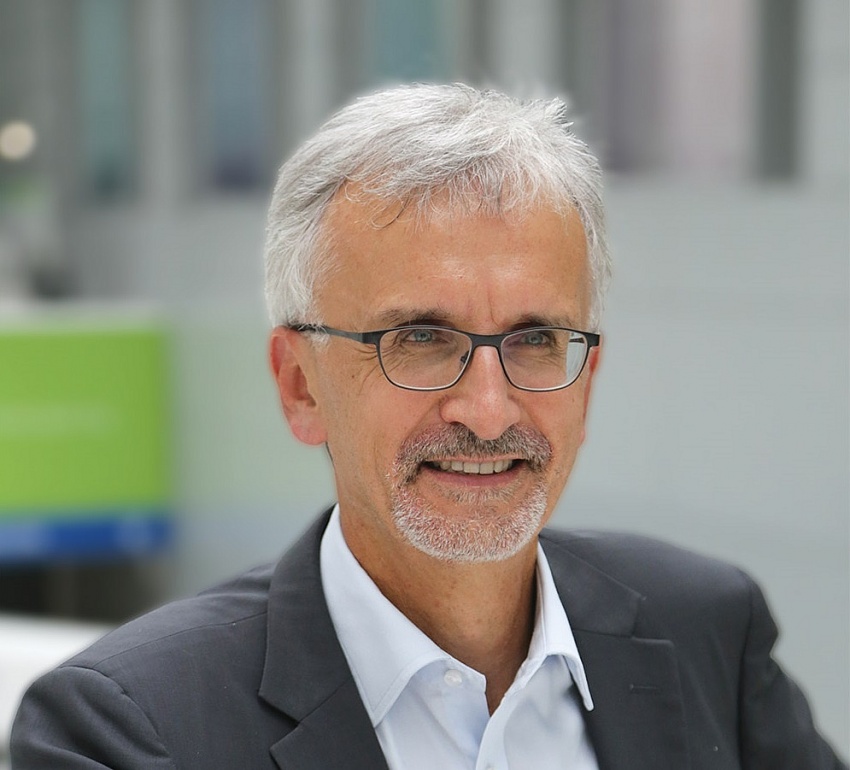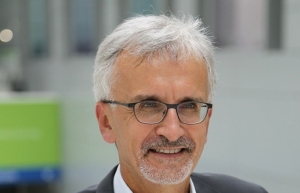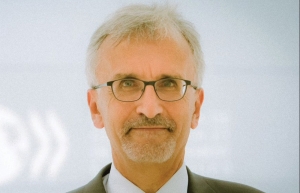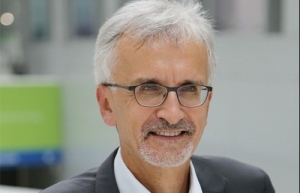Keeping the economic reform spirit alive
Despite bold macroeconomic reforms, strong investment in education, and deep insertion in global supply chains in Vietnam over the decades, much remains to be done.
 |
| Patrick Lenain, senior associate at the Council on Economic Policies |
As staff member in international organisations, I was privileged to witness the launch of the bold economic reforms in the late 1980s. The decision by the Sixth Party Congress in 1986 marked a turning point, aimed at addressing high inflation, slow growth, and international isolation.
The concerted use of monetary, price and exchange rate policies was instrumental in bringing inflation down from close to 400 per cent early in the transition to single digits in 1993. Ending at the same time the large subsidies to state-owned enterprises put the government budget back on its feet. Farming reforms turned a recurrent shortfall of rice production into an export surplus of one million tonnes.
Another critical process was to re-establish normal relations with the financial community. Foreign aid came early on from Japan and other donors in the late 1980s to support the transformation. After clearing its arrears to the International Monetary Fund (IMF) and Paris Club creditors in 1993, Vietnam was able to re-enter the international capital markets. With investors reassured by the turn of events, net foreign direct investment inflows surged to 5 per cent of GDP in the mid-1990s and has kept coming in large numbers since then.
Vietnam’s strong commitment to macroeconomic stability over the past 35 years has paid off. Thanks to a low sovereign debt, the country has avoided being caught in the middle of international debt crises. It largely escaped the 1997 Asian financial crisis, the 2007-2008 global financial crisis, and the spillover from the 2023 collapse of Silicon Valley Bank and Credit Suisse. Fiscal space and good macroeconomic management have allowed Vietnam to avoid the pandemic global recession.
Notwithstanding this, not all is well. While government debt is managed carefully, the same does not always hold for the corporate sector and banking institutions. The property sector remains in difficulties, with real estate firms facing financing barriers. As summed up by the recent IMF staff team visiting Hanoi last June, downside risks are high. This leaves no room for complacency.
Equal access to tertiary education
As a faculty member, I had the opportunity to teach economics to Hanoi University’s students in the early 2000s. Vietnam has always invested in basic education and achieved both high enrolment rates and high-quality schooling outcomes. According to the Organisation for Economic Co-operation and Development’s (OECD) Programme for International Student Assessment based on tests administered on 15-year-old students, Vietnam has long been on par with the OECD average in mathematics and reading, while it scored above the OECD average in science.
Avoiding the so-called middle-income trap requires investment in tertiary education. As put by the World Bank, convergence toward higher-income economies requires an ever-larger talent pool: more engineers, scientists, managers, and other highly skilled professionals.
Starting in the early 2000s, Vietnam launched its Higher Education Reform Agenda, a long-term programme to increase the autonomy and responsibility of tertiary education institutions. The reform replaced control by ministries with a new governance system giving legal autonomy to the academic world. Universities were granted the responsibility for their programmes, research agendas, human resource management practices and budget plans.
The strong demand for university degrees has been met by the opening of many new universities. There are now 242 universities in the country, of which 67 are privately owned, providing education to approximately 2.15 million students. Vietnam has now achieved a tertiary education enrolment rate of 42 per cent. Progressing towards a status of upper middle-income country would imply an even higher enrolment rate of 63 per cent – which will require even more universities and teaching staff.
Fast expansion of high-quality universities will be a challenge. Top universities are typically involved in collaboration with foreign institutions, provide students with exchange opportunities, receive international accreditation, adopt modern curriculums and teaching methods, provide teaching in English, invest in digital technologies and infrastructure, and ensure that graduating students are rapidly employed. This is a big task.
International rankings of universities are not perfect, yet they provide signs that Vietnam’s universities are moving up the ladder. As an illustration, in Ho Chi Minh City, the Ton Duc Thang University has received many international accreditations and is included in several international rankings. In Hanoi, the Vietnam National University is also moving up in international ranking.
The challenge is to keep higher education affordable. Rather than just training a few thousand excellent students, universities should allow equal access to talent irrespective of family status, gender, and ethnic origin.
Improving competitiveness
As an OECD official in recent years, I witnessed Vietnam’s impressive integration with global markets. Vietnam joined the World Trade Organization in 2007 – thus immediately gaining access to foreign markets with preferential import tariffs. The country also signed multiple free trade agreements to consolidate its integration with partner countries.
Imports from China and exports to the United States have flourished in recent years, making Vietnam a key hub in global commercial relationships. A key feature is the high product diversity of exports, with a mix of electronic goods, textiles and foodstuffs, thus increasing resilience to product investment cycles.
A highly attractive destination for international visitors, Vietnam gets large inflows of foreign currency earnings from tourism, which contributes to a significant 9 per cent of GDP. Easier restrictions on arrival – particularly a new pre-approved e-visa – facilitates travelling. Vietnam expects to host 17-18 million tourists this year, with a majority from neighbouring Asian countries such as South Korea and China.
A sign of the country’s high business attractiveness, foreign investment continues to advance, with recorded inflows of $12.55 billion during the period January to July 2024. The Ministry of Planning and Investment expect inflows of $39-40 billion during the entire 2024, more than in the previous year, with an ongoing interest in electronic and telecommunication activities.
Vietnam has also moved decisively to normalise its external currency relations. Whereas the foreign exchange market in the 1980s was characterised by a pervasive black market, dual exchange markets, recurrent devaluations, and severe convertibility restrictions, the State Bank of Vietnam has now achieved a smooth exchange rate management.
Moving away from a rigid peg to the US dollar, it is now pursuing a more flexible policy, with a trading band of +/- 5 per cent around the reference rate. The IMF has welcomed this increased exchange rate flexibility, which it says will help better manage external shocks while safeguarding foreign exchange reserve buffers.
As a recent OECD report suggests, much remains to be done to improve the business climate, ensure a level playing field, tackle corruption, and reduce the high intensity of carbon emissions. Almost four decades after the historic decision to launch major reforms, Vietnam should continue building on its reform momentum. This will be crucial for sustainable and inclusive prosperity.
 | Can Vietnam achieve its goals on net-zero emissions? Vietnam’s economic achievements have been impressive over recent decades but greenhouse gas emissions have risen alongside them. Patrick Lenain, former assistant director at the Organisation for Economic Co-operation and Development, looks at the carbon market for this country moving forward as it tries to meet major emission-reducing targets. |
 | Assessing risks of inflation for everyday life in Vietnam While inflation has soared around the world, Vietnam has successfully kept it low. However Patrick Lenain, senior associate at the Council on Economic Policies, writes that it is too soon to claim victory because new bursts in food prices could occur, putting at risk the health of undernourished people. |
 | OECD: Reforms can boost economic and social progress The Organisation for Economic Cooperation and Development (OECD) has published its Economic Survey of Vietnam – a first-ever comprehensive study of the country’s economic, financial, social and environmental trends. Patrick Lenain, CEP senior associate, analyses the outcomes. |
What the stars mean:
★ Poor ★ ★ Promising ★★★ Good ★★★★ Very good ★★★★★ Exceptional
Related Contents
Latest News
More News
- Main drivers for Vietnam’s digital economy future (December 03, 2025 | 11:35)
- Pivotal stage of growth paves way for rise in M&As (December 03, 2025 | 10:00)
- Positive projections for M&A interest from Thailand (December 03, 2025 | 09:40)
- Manifesting the first line of defence in cybersecurity (December 03, 2025 | 09:00)
- The transformational role AI can play in accounting arena (December 03, 2025 | 08:00)
- Unlocking 5G-AI potential in Singapore (December 03, 2025 | 08:00)
- Data-driven strategies vital for a fast-evolving nation (December 02, 2025 | 09:41)
- Policy to practice: how Vietnam can lead the region (November 26, 2025 | 16:03)
- Mobilising private capital at scale vital for climate battle (November 26, 2025 | 15:36)
- VILAF and Yoon & Yang launch Vietnam - Korea Practice Unit (November 26, 2025 | 15:16)

 Tag:
Tag:




















 Mobile Version
Mobile Version